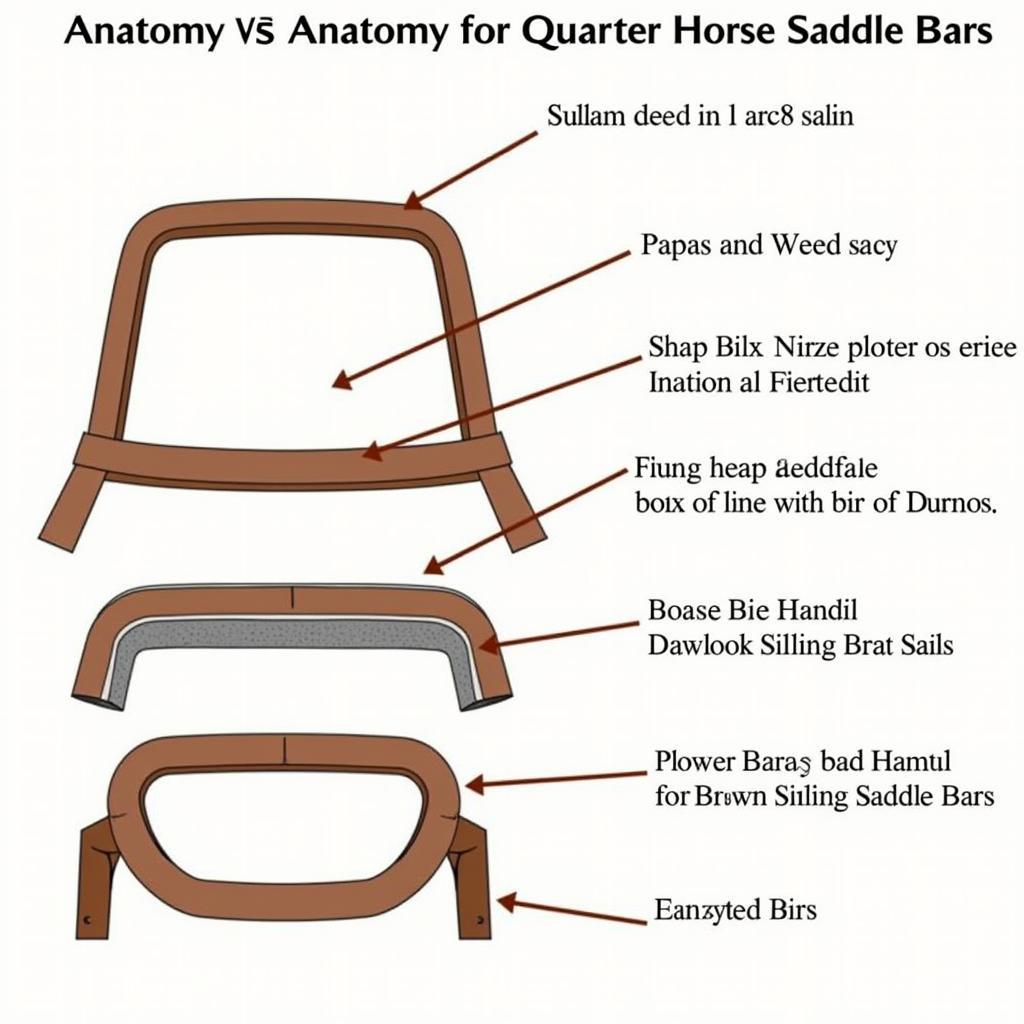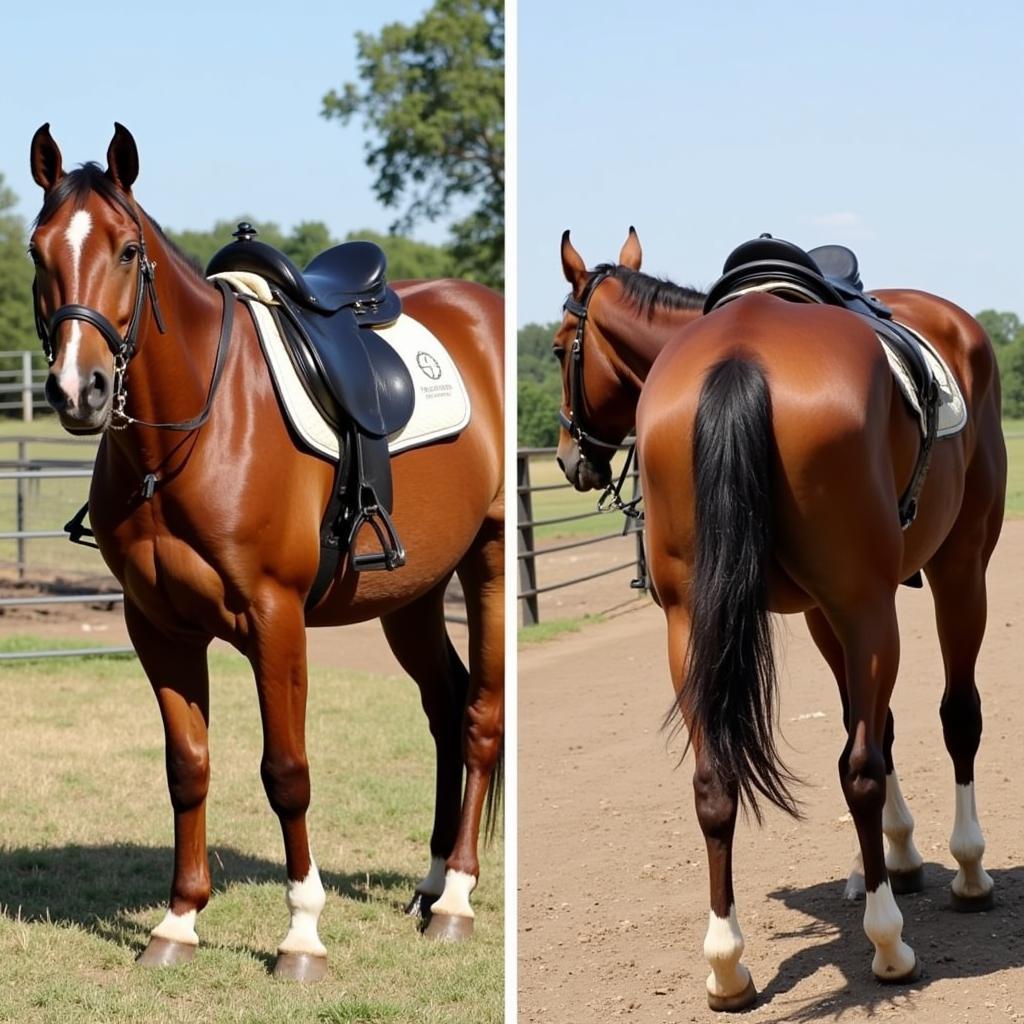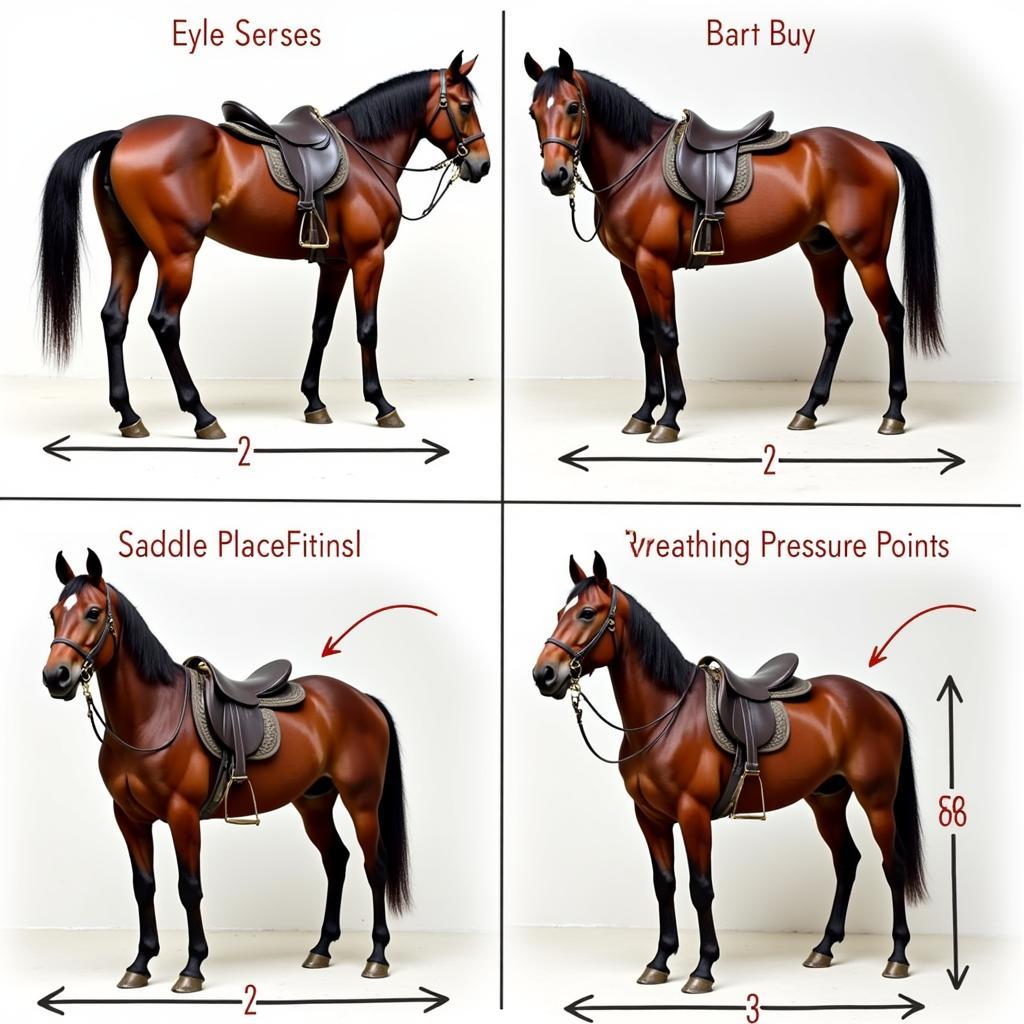Quarter Horse Bars On A Saddle are crucial for the comfort and well-being of your equine companion. These bars, the underside of the saddle that rests on the horse’s back, are specifically designed to accommodate the unique conformation of a Quarter Horse. Choosing the right saddle with correctly fitted bars ensures proper weight distribution, prevents pressure points, and allows for freedom of movement.
 Quarter Horse Saddle Bars Anatomy
Quarter Horse Saddle Bars Anatomy
Importance of Proper Saddle Fit
A poorly fitted saddle can lead to a myriad of problems for your horse, ranging from discomfort to serious back issues. When saddle bars don’t align with the horse’s back, pressure points can develop, leading to pain, sores, and even behavioral problems. Horses may exhibit reluctance to be saddled, buck, or refuse to perform.
 Effects of an Ill-Fitting Saddle on a Horse
Effects of an Ill-Fitting Saddle on a Horse
Quarter Horse Conformation and Saddle Fit
Quarter Horses, known for their stocky build and powerful hindquarters, often have a shorter, broader back than other breeds. This conformation requires saddle bars that are wider and flatter to distribute weight evenly and avoid pressure on the withers (the highest point of the shoulder) or loin (the area behind the ribs).
Types of Quarter Horse Bars
Saddle makers offer various bar styles to suit different Quarter Horse back shapes. Some common types include:
- Regular Quarter Horse Bars: Suitable for horses with an average back shape within the breed.
- Wide Quarter Horse Bars: Designed for horses with exceptionally broad backs.
- Semi-Quarter Horse Bars: Offer a slightly narrower fit compared to regular Quarter Horse bars.
Determining the Right Saddle Fit
Finding the perfect saddle fit for your Quarter Horse is best achieved with the help of a qualified saddle fitter. They possess the knowledge and experience to:
- Assess your horse’s back conformation: Using visual inspection and tools to determine the shape, width, and length of the bars required.
- Evaluate saddle fit: Checking for proper clearance at the withers, even weight distribution, and appropriate panel pressure.
- Recommend adjustments: Suggesting flocking adjustments or other modifications to optimize saddle fit.
 Saddle Fitting Process by an Expert
Saddle Fitting Process by an Expert
Signs of a Poorly Fitted Saddle
Even with a professional fitting, it’s crucial to monitor your horse for any signs of discomfort:
- Dry spots under the saddle pad: Indicate areas of uneven pressure.
- White hairs: Often a result of long-term pressure and damage to hair follicles.
- Behavioral changes: Reluctance to move forward, bucking, or pinning ears back.
Conclusion
Investing in a properly fitted saddle with appropriate quarter horse bars is an investment in your horse’s health and happiness. Remember, a comfortable horse is a willing partner, and proper saddle fit is paramount to their well-being.
FAQs
1. How often should I have my saddle checked for fit?
It’s recommended to have your saddle fit checked at least once a year, or more frequently if your horse is young, growing, or has experienced significant changes in weight or muscle mass.
2. Can I ride my Quarter Horse in a saddle designed for another breed?
While it’s possible, it’s not ideal. Using a saddle designed for a different breed may result in discomfort and potential injury to your horse due to improper weight distribution and pressure points.
3. What is saddle flocking, and how does it relate to fit?
Saddle flocking refers to the wool or synthetic filling within the saddle panels. Adjusting the flocking can help fine-tune the saddle fit and ensure even weight distribution.
4. Do I need a different saddle for different disciplines?
Yes, different disciplines often require saddles designed for specific purposes. For example, a barrel racing saddle will have a different design and fit than a roping saddle or a trail riding saddle.
5. What should I do if I suspect my horse’s saddle doesn’t fit properly?
Stop riding immediately and consult with a qualified saddle fitter or equine veterinarian. They can assess the fit and recommend appropriate solutions.
For any questions or assistance with saddle fitting for your Quarter Horse, please don’t hesitate to contact us!
Phone Number: 0772127271
Email: [email protected]
Address: QGM2+WX2, Vị Trung, Vị Thuỷ, Hậu Giang, Việt Nam
We have a dedicated customer support team available 24/7 to address your concerns and provide expert advice. You can also find more information on our website, external horse anatomy, for a detailed look at the anatomy of a horse.